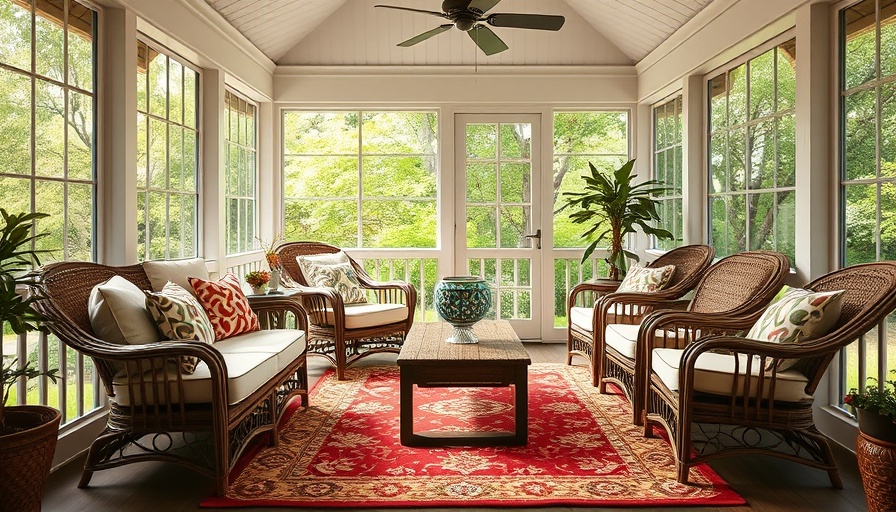
Transform Your Home with a Screened-In Porch
Have you been dreaming of a tranquil space where you can enjoy nature's beauty without the interference of pesky insects? Think no further than a screened-in porch—a perfect fusion of comfort, style, and enjoyment that revitalizes any home environment. This simple yet transformative upgrade allows homeowners to enjoy a seamless blend of indoor comfort and outdoor allure.
Understanding the Charm of Screened-In Porches
As your connection to the outdoors, a screened-in porch serves as a protective barrier while still allowing fresh air and natural light to flood in. It’s the ideal gathering spot for family and friends, where you can sip coffee on a crisp morning or share stories under the stars without worrying about bugs. Landscaping expert Redman Svedberg notes that these spaces encourage outdoor living year-round, blending the cozy indoors with the vibrant outdoors.
1. Crafting the Perfect Location
Your screened-in porch should complement your lifestyle effectively. Consider the sun’s path and how it interacts with your space. East-facing porches can capture the morning sun, creating a bright atmosphere for breakfast, while those facing west can provide a serene sunset viewing area. Think about privacy and noise levels too; placing your porch strategically can make a big difference in how much you enjoy it.
2. Cozy Design Elements
Choosing cozy design elements can turn your porch into a retreat. Adding comfortable furniture, throw pillows, and blankets can make it inviting. Incorporating details like a vintage porch swing or a hammock adds an element of nostalgia and relaxation. Decorating with soft lighting such as string lights or lanterns can create a calming ambiance, perfect for evening gatherings!
3. Selecting Stylish yet Durable Materials
When choosing materials for your screened-in porch, durability is key. Opt for weather-resistant options that don’t compromise on style. Fabrics like acrylic or marine-grade materials for furniture are great options as they withstand the elements while maintaining their appearance. Wood finishes offer natural beauty but ensure they are treated for longevity.
4. Enhancing Comfort with Ceiling Fans
Maximize airflow by including ceiling fans in your porch design. Not only do they enhance comfort during warm summer days, but they also add a stylish element to the space. Choose fans that complement your décor and efficiently circulate the air to keep your screened-in porch inviting all day long.
5. Bringing Nature Indoors
What better way to enjoy the outdoors than by incorporating plants into your porch? Plants can make your space feel even more alive and vibrant. Choose low-maintenance houseplants like ferns or succulents that thrive in the filtered light of your screened-in porch. They're great conversation starters and can enhance both aesthetic appeal and air quality!
6. Extending Your Porch’s Usability
Screened-in porches can be versatile throughout the seasons. Consider adding outdoor heating elements for a cozy evening in the fall or installing removable screens for a change in climate. With creativity, a screened-in porch can be an adaptable space, transforming into a sunroom or a protected garden nook as needed.
7. Next Steps: Exploring Additional Options
After you create your dream screened-in porch, consider whether adding a lanai might be beneficial. A lanai is a wonderful extension for outdoor living, offering more protection from wind and rain. It opens up additional possibilities for outdoor enjoyment while ensuring comfort and style.
Conclusion: Enjoying the Indoor/Outdoor Flow
A screened-in porch is not just an aesthetic enhancement for your home; it symbolizes a lifestyle that prioritizes nature and comfort. As you relish the fresh air, the sounds of nature, and the soothing environment, you'll understand why this simple upgrade can become a cherished aspect of your everyday life. So, what’s stopping you? Start planning your screened-in porch today and turn that dream into reality!
 Add Row
Add Row  Add
Add 




Write A Comment